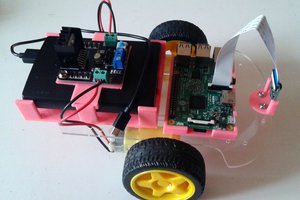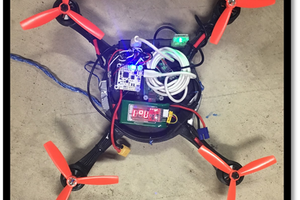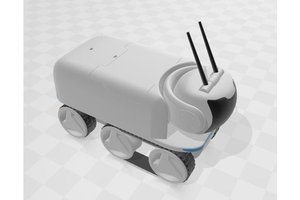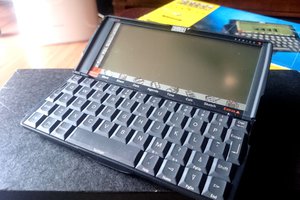If you are a maker then you have doubtless heard of free hand rapid prototyping projects like the 3Doodler and Lix. The problem with these products is that it is difficult to get nice smooth flowing structures in 3D. While the Lix greatly improved the form factor, it also carries a more premium price tag and still has the same problem that if the speed you move your hand through space is too fast, the part will sag or become too thin because the plastic hasn't had time to cool or the pen didn't output material at the right rate. Additionally, both pens need to be continually refilled with filament rods to continue operation. This distracts from the creative process.
Enter the Transparent Rapid Extrusion Pen. The T-REx Pen solves the above problems by moving away from FDM style rapid prototyping and into the world of computer assisted free hand stereolithography. The T-REx Pen uses a Raspberry Pi Zero and two webcams to precisely track the position and angle of the pen in 3-space. At the tip of the pin there is a ring of UV LEDs to activate and nearly instantly harden the resin. A thin tube pumps resin from a reservoir to the pen by means of a peristaltic pump controlled by the Raspberry Pi. A button on the side of the pen activates drawing functionality. When drawing, the Raspberry Pi senses the rate the pen is moving and adjusts resin output speed and curing LED brightness accordingly. In this way, no matter how fast or how slow you choose to draw, the pen will keep up with you (within maximal curing speed and assuming no acceleration is faster than the camera can handle of course). All you have to do is press the button and draw at your own pace. Because no resin or motors are in the pen body itself, the drawing instrument can be kept sleek, thin, and well balanced. Also, because the material the T-REx draws with is resin, smooth transparent structures can be created with hardly noticeable seams. Because a computer is watching what is happening, potentially it could auto turn deactivate the pump whenever you leave the region of a predefined model or provide tactile feedback when you approach the boundary. That is an idea for the future though as the initial prototype concept still needs to be proven.
If I win a Raspberry Pi Zero I will personally develop the project with regular updates. This project has a target budget of $60 and I plan to open source everything at the end.
 Amos Manneschmidt
Amos Manneschmidt
 mikrotron
mikrotron
 sujoy2900
sujoy2900
 Josh Starnes
Josh Starnes